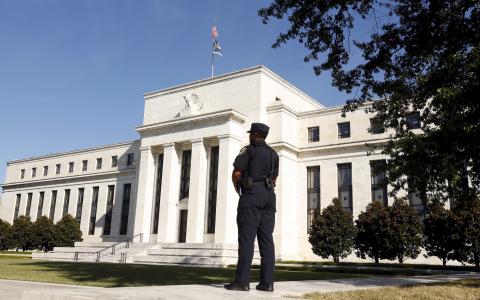
(Bloomberg) The Federal Reserve is ready to shift off a mechanical pace of interest-rate increases every quarter and that could mean a slower pace of tightening next year.
That was the message from Fed Governor Lael Brainard, speaking on the final day before officials enter a blackout period for public comment ahead of their Dec. 18-19 meeting. She was hammering home an argument her colleagues have also communicated in recent weeks.
“The gradual path of increases in the federal funds rate has served us well by giving us time to assess the effects of policy as we have proceeded,’’ Brainard said Friday at a conference in Washington. “That approach remains appropriate in the near term, although the policy path increasingly will depend on how the outlook evolves.”
Fed officials have left little doubt that they intend to raise the benchmark lending rate range a quarter point later this month. The economy is strong and continues to generate jobs, and inflation is around their 2 percent target.
They are not flustered by volatile financial markets and consequent tightening of financial conditions, or a slowing in rate-sensitive sectors of the economy such as housing.
Brainard continued to make that point, deflecting a softer-than-expected November payroll report earlier on Friday to focus on the underlying trend of job creation over the past three months, which she called “well above’’ the pace necessary to absorb new entrants.
December Hike
Investors widely expect a hike at the December meeting, with pricing in futures markets implying 70 percent odds of a move. The outlook for next year has been cut to less than one increase.
With the Fed’s benchmark policy rate moving nearer to the bottom of the range they consider neutral -- neither slowing nor speeding up growth -- the goal now is to preserve the expansion and not break it.
The job is more difficult than it sounds because monetary policy works with a lag. Speaking in Dallas on Nov. 14, Chairman Jerome Powell said this risk management approach is like walking slowly through a dark room cluttered with furniture.
Read More: Fed’s Job Gets a Lot More Complicated After Likely December Hike
That analogy points to policy makers feeling their way through the near-term data, and, if they have to, pausing from time to time.
Brainard’s Pivot
“They are reclaiming flexibility,’’ said Priya Misra, head of global rates strategy at TD Securities LLC in New York. “It isn’t necessarily dovish, but there is a shift in the messaging.’’
Brainard’s remarks Friday underscored that pivot because her use of the phrase “near term” was a clear change in tone compared to a speech she gave Sept. 12 in Detroit, when she said continued gradual hikes were likely to be appropriate “over the next year or two.”
While noting that a robust labor market, consumer spending and fiscal stimulus are keeping the economy strong, Fed officials are also pointing to a growing list of downside risks.
Brainard cited the U.K.’s deliberations over Brexit and Italy’s debt trajectory. In the U.S., businesses are reporting uncertainty about trade policy and the implications that may have for supply chains. That could weigh on capital spending, she said.
Fed Board Vice Chairman Richard Clarida said central bankers globally should still be concerned about disinflationary forces.
“In recent decades, the asymmetry has been toward disinflation forces,” Clarida said in an interview with Bloomberg Television Dec. 3. Asked about the price impacts of globalization, he said that “we are in a world where central banks, including the Fed, are focused on keeping inflation away from disinflation.”
Fed officials are also aware that the economy is overshooting their estimates for potential growth and full employment. That’s an upside risk, which is why they haven’t signaled yet that think an extended pause in rate hikes is appropriate. There is also lots of anecdotal evidence reaching their 12 regional reserve banks about worker shortages and higher wages, according to the latest Beige Book report released on Dec. 5.
“We knew this day would come,” said Carl Tannenbaum, chief economist at Northern Trust Corp. in Chicago, referring to the Fed’s strategy shift. “Having closed most of the ground between zero and neutral, the last few steps are going to be the most freighted.”



